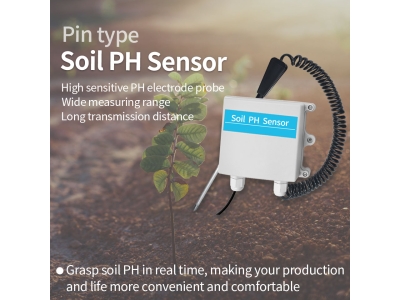Farming has come a long way since its traditional practices, with technological advancements revolutionizing the industry. One such innovation that has gained significant attention is soil sensors. These devices harness the power of data to provide farmers with real-time information about their soil conditions, enabling them to make smarter decisions and optimize farming practices. In this article, we will explore the impact of soil sensors on farming practices and the benefits they bring to the agriculture industry.
The Role of Soil in Agriculture

Soil is the foundation of agriculture. It provides essential nutrients, water, and support for plant growth. Therefore, understanding the condition of the soil is crucial for farmers to cultivate healthy crops and achieve optimal yields. Traditionally, assessing soil conditions required manual labor and guesswork. However, with the introduction of soil sensors, farmers now have access to accurate and up-to-date data that can transform their farming practices.
The Functionality of Soil Sensors
Soil sensors are devices that measure and monitor various parameters in the soil. These sensors can be inserted into the ground at different depths to collect data on factors such as moisture content, temperature, pH levels, nutrient levels, and salinity. The sensors transmit this information to a central system, allowing farmers to access it remotely and make informed decisions based on real-time data.
Applications of Soil Sensors
Soil Moisture Monitoring: Water is a precious resource in agriculture, and efficient irrigation is vital for crop health and yield. Soil sensors equipped with moisture probes provide accurate readings of soil moisture levels, helping farmers determine when and how much to irrigate. This prevents overwatering or underwatering, ensuring that crops receive the optimal amount of water for their growth.
Nutrient Management: Soil sensors play a crucial role in optimizing fertilization practices. By measuring nutrient levels in the soil, farmers can determine the precise amount and timing of fertilizers required. This prevents over-application of nutrients, reducing costs and minimizing environmental impact.
pH Monitoring: Soil pH affects nutrient availability and microbial activity in the soil. Soil sensors equipped with pH probes provide real-time data on soil acidity or alkalinity. By monitoring pH levels, farmers can make informed decisions about soil amendments and adjust pH to create the optimal conditions for crop growth.
Temperature Monitoring: Soil temperature plays a vital role in seed germination, root growth, and nutrient uptake. Soil sensors equipped with temperature probes allow farmers to monitor soil temperature at various depths. This information helps determine the best time for planting and optimize crop management practices throughout the growing season.
Salinity Management: Excess salt in the soil can be detrimental to crops. Soil sensors equipped with salinity probes measure the electrical conductivity of the soil solution, reflecting salt concentrations. By monitoring salinity levels, farmers can implement appropriate irrigation and drainage strategies to prevent salt build-up, promoting healthy crop growth.
Benefits of Soil Sensors
Precision and Efficiency: Soil sensors provide accurate and real-time data, allowing farmers to make precise decisions about irrigation, fertilization, and other farming practices. This leads to more efficient resource utilization, reduced costs, and improved crop yields.
Disease and Pest Management: Early detection of diseases and pests is crucial for effective control measures. Soil sensors can detect changes in soil conditions that may indicate the presence of diseases or pests, allowing farmers to take prompt action. This reduces the risk of crop damage and minimizes the need for excessive pesticide use.
Sustainability: Soil sensors enable sustainable farming practices by optimizing resource management. By using soil sensors to monitor moisture levels and nutrient requirements, farmers can avoid wasteful irrigation and excessive fertilizer application. This promotes environmental sustainability and reduces the impact of agriculture on water resources and ecosystems.
Data-Driven Decision Making: Soil sensors provide valuable data that can be analyzed and used to gain insights into soil health and crop performance. This data-driven approach helps farmers make informed decisions about planting, fertilization, irrigation, and other management practices.
Challenges and Future Developments
While soil sensors offer significant benefits, there are challenges that need to be addressed for their widespread adoption:
Cost: The initial investment in soil sensors can be a barrier for some farmers, particularly small-scale operations. However, as technology continues to advance, costs are expected to decrease, making soil sensors more accessible to a broader range of farmers.
Data Management: T






